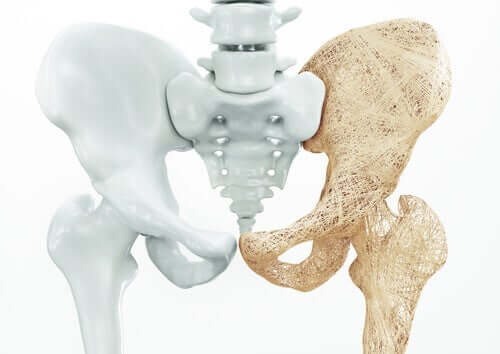The Male Pelvic Floor

The male pelvic floor isn’t a common topic, since many people don’t think it’s important for men to talk about it. In fact, there are many men who can’t identify this part of their body or don’t know that it exists.
It’s very important to work the male pelvic floor to prevent problems like urinary incontinence or erection issues. In fact, some of these problems appear around age thirty, and get worse at around fifty.
When the male pelvic floor works properly, you can prevent certain prostate problems. Also, it can help men function normally during sex.
What is the male pelvic floor?

This area goes from the pubic bone, which is above the base of the penis, to the coccyx, which is the lowest part of the spine. Laterally, it’s the space between the two bones on the sides when you sit.
On the male pelvic floor, there are nerves, muscles, blood vessels, ligaments and fascias. The muscles in this area help with:
- Control
- Support
- Contraction
Keep reading: Three Yoga Poses for Your Pelvic Health
Functions
On the pelvic floor, there’s a set of muscles that carries out lots of different functions. The most important of these is to control urinary and anal continence. This means that thanks to these muscles, you can empty your bladder and intestine in the right way.
In addition, the male pelvic floor supports the bladder and rectum. In fact, these are the pelvic organs. Additionally, the muscles in this area play an important role in both erections and ejaculation. Therefore, they’re essential to function sexually.
However, the pelvic floor can weaken based on age or not exercising enough. Also, this can be the result of neurological diseases, infections, surgery to remove tumors or radiotherapy.
In addition, weakness in the male pelvic floor can cause urinary or prostate problems. It can also significantly affect sexual function, even leading to:
- Erectile dysfunction
- Premature ejaculation
- Chronic pelvic pain syndrome
Also read: Drugs and Erectile Dysfunction: Is There a Relationship?
Location

- Stop urination. All you have to do is stop urinating to locate and feel the pelvic floor muscles. However, we don’t recommend doing this more than once a week.
- Hold gas. This is similar to the first tip. However, this time, hold your gas. To do this, you have to contract the muscles in the anus. It retracts and lifts into the pelvic floor.
- Look in a mirror. You can try to contract this muscle in the mirror. If you do it right, the penis retracts and the scrotum rises.
- Post-urination contraction. After emptying your bladder, try to contract your pelvic floor. If you do it right, you can expel the remaining urine. Also, this helps control leaking.
Other important data about the male pelvic floor
It’s important to pay attention to this part of your body. Additionally, start practicing pelvic floor hygiene measures. The most important thing is to prevent this area from getting weak. Otherwise, it could cause the problems we mentioned earlier.
Kegel exercises are great to strengthen the male pelvic floor. In fact, they’re very simple, and great for men over thirty. It’s also a good idea to follow a balanced diet, be careful when lifting weights, and try to avoid constipation.
All cited sources were thoroughly reviewed by our team to ensure their quality, reliability, currency, and validity. The bibliography of this article was considered reliable and of academic or scientific accuracy.
del Carmen, M. C. D. J., Torres, M., & Bolaños, O. (2015). Disfunciones sexuales y disfunciones del suelo pélvico.¿ Problemas de salud relacionados?. Revista Sexología y Sociedad, 21(2), 224-233.
This text is provided for informational purposes only and does not replace consultation with a professional. If in doubt, consult your specialist.








